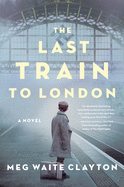
| Publisher: | Harper | |
| Genre: | Cultural Heritage, General, Fiction, Historical, Jewish | |
| ISBN: | 9780062946935 | |
| Pub Date: | September 2019 | |
| Price: | $27.99 |
| Fiction |
by Meg Waite Clayton
In 1936, 15-year-old aspiring playwright Stephan meets Zofie-Helene, a mathematics prodigy. She loves theater and knows of a series of tunnels under the city of Vienna that lead to the local theater, allowing them to observe rehearsals. They hit it off immediately, but their story of young love darkens quickly because Hitler's Nazi party is about to roll into Austria and wreak havoc. Stephan is Jewish, Zofie-Helene is Christian, and her mother is an outspoken journalist exposing Hitler. The teens are in the Nazi crosshairs, and they eventually become involved with Kindertransport leader Geertruida Wijsmuller. The Dutch activist-housewife has been quietly saving the lives of Jewish children by smuggling them out of Germany. It is dangerous work for Wijsmuller because she accompanies the kids herself and they don't have official identity papers; only a few can travel under her passport without raising suspicion at border crossings. Suddenly it's no longer a handful of children needing her help. Frightened parents, about to be killed or sent to concentration camps, shove their babies and toddlers into Wijsmuller's arms, pleading with her to give their children a better life elsewhere.
The Last Train to London is based on the real life of Geertruida Wijsmuller-Meijer, aka Tante Truus to the children she saved. Author Meg Waite Clayton (Beautiful Exiles) inserts a Romeo and Juliet element into an already heartbreaking true story of a heroic woman who smuggled hundreds of children out of Hitler's grasp. This is a solid and tenderly told tale juxtaposing budding young love against a backdrop of a well-documented time of cruelty. --Paul Dinh-McCrillis, freelance reviewer
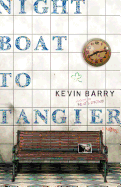
| Publisher: | Doubleday | |
| Genre: | Urban, Crime, Literary, Fiction | |
| ISBN: | 9780385540315 | |
| Pub Date: | September 2019 | |
| Price: | $25.95 |
| Fiction |
by Kevin Barry
In the Spanish port town of Algeciras, two men wait in a ferry terminal that is "as awful a place as you could muster." The men, Maurice and Charlie, are not much better, "a savage pair" of aging Irish criminals. While waiting for Maurice's daughter, Dilly, to arrive on a boat from Tangier, they ruminate on their illicit lives and careers, each haunted by their own ghosts.
From this deceptively simple scene, an existential conundrum unfolds in the tradition of Kevin Barry's countryman Samuel Beckett in Waiting for Godot. The two men are waiting for Dilly. Do they know when she will arrive? Is she arriving or departing? Is it possible she could have already come and gone? Have they missed her? What if she doesn't show? What if something happened to her? How long have they been waiting? Minutes? Months? Years?
Time gives way to an ever-expanding present overshadowed by uncertainty and danger. The tension captures the anxiety of a world teetering on the brink of chaos. Barry expertly places his characters in the crucible of this unravelling present, one increasingly destabilized by a refusal to confront, or even remember, the horrors of the past. If Dilly would just arrive, the pair could realize their only hope. Within the space of that constantly deferred action, everything happens.
In Night Boat to Tangier, Kevin Barry (City of Bohane; Dark Lies the Island) is at the height of his creative powers. --Jarret Middleton

| Publisher: | Crooked Lane | |
| Genre: | Domestic, Medical, Suspense, Thrillers, Fiction | |
| ISBN: | 9781643850405 | |
| Pub Date: | September 2019 | |
| Price: | $26.99 |
| Mystery & Thriller |
by Kira Peikoff
After losing their son, Colton, when he was eight, Claire and Ethan are desperate to have another child. But Claire carries the gene for a deadly disease, and adoption isn't an option for the couple.
Their only solution lies in the hands of Dr. Robert Nash, who illegally dabbles in gene editing to eliminate faulty DNA. When Claire hears about his work on the dark web, she volunteers to be Nash's first human test subject--without revealing the truth to her husband, a bioethics professor and vocal opponent of DNA experimentation. The procedure might get Claire what she wants, but it also brings dangerous consequences for her and her family. Is it worth bringing a healthy child into this world, only to put the child at risk?
Kira Peikoff's Mother Knows Best tackles cutting-edge science and the age-old question: Just because we can do something, does it mean we should? The author gives enough scientific information for readers to follow the story--and learn something in the process--but doesn't bog down the narrative with technical jargon. Peikoff (Living Proof) focuses on the emotional and ethical plight of the parties involved: Claire; Dr. Nash and his mercurial assistant, Jillian; Claire's husband, Ethan; and Abby, the miracle baby. The story is told from the points of view of the women and child, and shows there's no one clear answer to the question of whether or not genetic experimentation should be encouraged. Mother Knows Best offers intelligent, valid arguments from different angles, allowing readers to reach their own conclusions. --Elyse Dinh-McCrillis, freelance editor
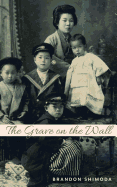
| Publisher: | City Lights | |
| Genre: | Biography & Autobiography, Personal Memoirs, Asian & Asian American, Asian American Studies, Cultural, Ethnic & Regional, Social Science, Ethnic Studies | |
| ISBN: | 9780872867901 | |
| Pub Date: | July 2019 | |
| Price: | $16.95 |
| Starred | Biography & Memoir |
by Brandon Shimoda
By the time Brandon Shimoda's grandfather died in 1996, he had been living with Alzheimer's for almost 20 years. Shimoda was then a college freshman, which meant he had had little opportunity to know the man without the disease. Reacting to "the loss--the losing," Shimoda started writing The Grave on the Wall almost a decade ago, collaging other people's memories, documentation and transcripts in search of Midori Shimoda, his father's father. The compelling result is a meditative memoir-of-sorts about his grandfather, his extended family, his ancestral heritage and ultimately himself as a 21st-century Japanese American.
Midori was conceived in Hawaii and born--in 1909 or 1910 or 1911, depending on who is remembering--on an island off the coast of Hiroshima. At nine, he immigrated to the U.S., where he lived the rest of his life. During World War II, he was one of 120,000 Americans of Japanese ancestry imprisoned without cause: his Japanese birth classified him as "enemy alien"; being a photographer with a camera landed him in unlawful confinement at Fort Missoula, Mont., where he was "held under pretext of being a threat to the national security of [this] country."
Decades later, Brandon Shimoda made his first visit to Missoula, "to the ruins of Japanese American incarceration, [and] found Midori's face" in a photograph hanging on the barracks wall. The unexpected discovery becomes, for Shimoda, "Midori's grave, because it is... the first, most accessible, place [he] could visit [Midori] after death." Through his expansive pursuit, Shimoda alchemizes his family's recollections and confessions, his country's trespasses, his legacy of loss, into elegant, haunting testimony. --Terry Hong, Smithsonian BookDragon
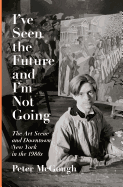
| Publisher: | Pantheon | |
| Genre: | Biography & Autobiography, AIDS & HIV, Personal Memoirs, Health & Fitness, Artists, Architects, Photographers, Diseases | |
| ISBN: | 9781524747046 | |
| Pub Date: | September 2019 | |
| Price: | $29.95 |
| Biography & Memoir |
by Peter McGough
In the fall of 1978, Peter McGough, who was raised in Syracuse in a big Catholic family, moved to Manhattan to attend the Fashion Institute of Technology. Of more interest to him than school was the Chelsea Hotel, Studio 54 and, fatefully, David McDermott, or McD, as the author refers to him throughout much of I've Seen the Future and I'm Not Going: The Art Scene and Downtown New York in the 1980s, his absorbing if occasionally omissive memoir of their decades-spanning (and ongoing) partnership.
After McGough moves in with McD in 1980, they dedicate their lives to McD's conviction that the past outclasses the present. (McGough lifts his book's title from a typical McD proclamation.) They haunt the pre-gentrified East Village wearing frock coats and shirts with detachable collars. They install antique fixtures and furniture in every property they proceed to rent or own. As McDermott & McGough, they co-create paintings and photographs that incorporate their aesthetic, and their work sells well until the art market collapses in the early 1990s.
When the partners are at loggerheads, as when McD's spending outpaces their earnings, McGough generally loses the match; the caption "Saying no to McD meant overturned tables and smashed mirrors, among other things" accompanies one of the book's reproductions of the artists' figurative autobiographical work. But if memoirs were written by and about people with impeccable judgment and behavior, they wouldn't captivate, and I've Seen the Future and I'm Not Going is like life with McD: never dull. --Nell Beram, author and freelance writer
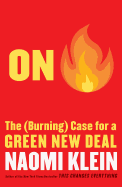
| Publisher: | Simon & Schuster | |
| Genre: | Economic Policy, Environmental Policy, Public Policy, Science, Global Warming & Climate Change, Essays, Political Science | |
| ISBN: | 9781982129910 | |
| Pub Date: | September 2019 | |
| Price: | $27 |
| Starred | Political Science |
by Naomi Klein
As news about climate change grows more urgent, the writing of journalists like Naomi Klein, who's covered the subject for almost 10 years, has grown more vital than ever. On Fire: The (Burning) Case for a Green New Deal collects Klein's finest long-form essays on climate of the previous decade. Organized in chronological order, the collection begins with her 2011 coverage of BP's Deepwater Horizon oil spill in the Gulf of Mexico, a spill so large it's been described as "the largest environmental disaster in U.S. history." Klein explains in scrupulous prose how poorly the oil company handled the clean-up. Her description of a town hall meeting between a BP representative and the residents of a small town affected by the spill is especially pointed.
Another standout is her 2017 "Season of Smoke," wherein she draws connections between that year's record-breaking wildfires in the western U.S. with climate change. A prominent theme here and throughout the collection is one of inequality, and how, even within the relatively wealthy United States, injustices tracing economic and racial lines exacerbate the suffering caused by the fires and other consequences of global warming.
Opening the collection is an introduction by Klein that argues why the entire globe--and not merely the U.S.--needs a Green New Deal, a wide-reaching plan that would reshape almost every aspect of contemporary life, including policy, economics and health care. This enraging but judicious collection will appeal to anyone who cares about the future of the planet. --Amy Brady, freelance writer and editor

| Publisher: | Bloomsbury | |
| Genre: | Computers, Email Administration, Literary Criticism, Digital Media, Anthropology, General, System Administration, Cultural & Social, Aesthetics, Semiotics & Theory, Social Science, Philosophy | |
| ISBN: | 9781501341908 | |
| Pub Date: | September 2019 | |
| Price: | $14.95 |
| Social Science |
by Randy Malamud
Email by Randy Malamud is both an entertaining look at how we communicate in the digital era as well as an ode to the lost art of letter writing. Much has been gained with the speed and convenience of e-mail but, as Malamud points out, much has been lost too. Firmly in the latter category is the fact that employees can be reached at all hours, with the result that the line between work and personal time has been blurred, to the detriment of workers.
There are myths to be debunked--e-mail is not carbon neutral--and hilarious anecdotes that many readers will find all too familiar. A chapter on passwords explores the dark side of cyber communications, including the risks posed by hackers, and accurately captures the bewildering complexity of computer-generated passwords that are not words at all. Malamud is well positioned to offer a refreshing angle on the topic of e-mail. As an English professor of a certain age, he was initially slow to adopt the technology and is decidedly old school in his views on e-mail composition. On the other hand, the author is cautiously optimistic that we can improve our relationship to technology by thoughtful and deliberate management. Importantly, he offers strategies to manage the ceaseless barrage of messages that can drain our time and energy.
Email is part of the elegant Object Lessons series of books that inspire readers to take a closer look at everyday items. It's a satisfying and informative book for anyone who has a love-hate relationship with their inbox and wants to improve their e-mail-writing skills. --Shahina Piyarali, writer and freelance reviewer
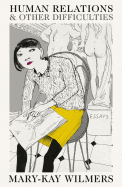
| Publisher: | Farrar, Straus and Giroux | |
| Genre: | Feminist, Literary Criticism, Literary Collections, Essays | |
| ISBN: | 9780374173494 | |
| Pub Date: | August 2019 | |
| Price: | $27 |
| Essays & Criticism |
by Mary-Kay Wilmers
In the essays collected in Human Relations & Other Difficulties, Mary-Kay Wilmers uses her well-furnished mind and well-sharpened wit to address the "puerperal paranoia" that can accompany motherhood. She offers a respectful and insightful examination of Joan Didion's maternal qualities as revealed in Blue Nights and takes a horrifying look at the mother of Marianne Moore. She resurrects the truncated life of Alice James, whose parents praised her for the "nervous weakness" of her mind while paying scant attention to her "latent possibilities"; sums up Jean Rhys as "a narcissist who described herself beautifully"; and eviscerates Patty Hearst's transformation from "granddaughter of Citizen Kane" to an "ever pragmatic" member of the Symbionese Liberation Army.
Wilmers elevates book reviews into wide-ranging and often provocative essays. She writes a brief and funny history of obituaries in the Times, followed by a delightful look at Pears' Shilling Cyclopedia (a collection of bizarre facts, etiquette tips and "recipes for nine kinds of scone"), which existed to promote the sales of Pears' soap. And Brussels will never be the same again after Wilmers's dismissal: "You could say that a place that worships an undistinguished statue of a little boy urinating deserves to be held in contempt."
Wilmers, co-founder and editor of the London Review of Books and author of The Eitingons: A Twentieth-Century Story, has said, "I like sentences and I like people who use sentences well." The woman who gave Oliver Sacks his most memorable title, The Man Who Mistook His Wife for a Hat, proves in her essay collection that she uses sentences as well as any writer and far better than most. --Janet Brown, author and former bookseller
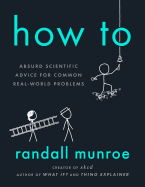
| Publisher: | Riverhead | |
| Genre: | Form, Science, General, Trivia, Humor, Essays, Physics | |
| ISBN: | 9780525537090 | |
| Pub Date: | September 2019 | |
| Price: | $28 |
| Science |
by Randall Munroe
There are plenty of self-help guides on the shelves, but none quite like Randall Munroe's fourth book, How To: Absurd Scientific Advice for Common Real-World Problems. Covering a wide field of subjects--how to build a lava moat, play tag, dig a hole, charge a phone--this extreme manual takes reasonable, everyday questions on a meandering exploration of impractically complex solutions. Throwing a pool party? Munroe calculates the necessary wall thickness of an above-ground pool made from hard gruyere cheese. For instructions on crossing a river, he walks the reader through the necessary steps to boil away all the water in the Kansas River using teakettles. Trying to preserve your copy of this book? The best bet is transferring it to a nickel-titanium disk and storing it on a comet, but a salt mine will do in a pinch.
Former NASA roboticist and webcomic creator Munroe (What If?, Thing Explainer) revels in the ridiculousness and uses each question as a jumping-off point for further inquiry. (For example, if you're going to build a lava moat, you'll also need a way to cool your house against the heat radiation.) Munroe goes into the science and mechanics of each activity and follows up with additional concerns and possible solutions, some reasonable but most bizarre.
"Physics doesn't care if your question is weird. It just gives you the answer, without judging." With How To, Munroe once again showcases what he does best: he makes scientific inquiry fun. According to Munroe, "This is a book of bad ideas," but that's what makes it great. --Jennifer Oleinik, freelance writer and editor
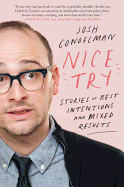
| Publisher: | Harper Perennial | |
| Genre: | Celebrity & Popular Culture, Internet & Social Media, Form, Topic, Humor, Essays | |
| ISBN: | 9780062852755 | |
| Pub Date: | September 2019 | |
| Price: | $16.99 |
| Humor |
by Josh Gondelman
In sincere and humorous essays, Josh Gondelman, an Emmy, Peabody and WGA Award-winning writer for Last Week Tonight with John Oliver, entertains at his expense, recalling both misfortunate and momentous episodes of his life. After revealing that being called "not nice" by his wife, Maris, nearly sparked happy tears, the "actually very nice" Gondelman shares anecdotes of trying to do more. He shaves "male pattern baldness" into his hair "to look more like Michael Keaton" for a school play, tries MDMA "for love" and lets his dog walker impersonate Michael Jackson at his wedding. Other stories highlight foul-ups, like serving Maris a dinner that could have killed her, and inspirations, like the speech he would give graduating high schoolers ("I Hope These Years Aren't the Best of Your Lives").
While significant milestones do appear, it's seemingly insignificant ones that resonate--becoming a "Real New Yorker" with a flip of the bird and wanting to spend his life with Maris after a well-timed Sublime lyric. Gondelman's vulnerability emerges when expressing shame at fainting during Gone Girl and recounting tears shed for his deceased Patriots-fan grandmother during the Super Bowl. Above all, Gondelman's unexpected analogies will please John Oliver fans: he compares his pug to yogurt ("technically alive, but not especially vigorous") and New York to "a tapeworm for your bank account and self-esteem." Both witty and matter-of-fact, Nice Try: Stories of Best Intentions and Mixed Results encourages readers to take solace in Gondelman's mishaps and keep trying until desired results are achieved. --Samantha Zaboski, freelance editor and reviewer

| Publisher: | First Second/Macmillan | |
| Genre: | Friendship, People & Places, United States - Asian American, Health & Daily Living, General, Social Themes, Juvenile Fiction, Comics & Graphic Novels, Diseases, Illnesses & Injuries | |
| ISBN: | 9781250183873 | |
| Pub Date: | September 2019 | |
| Price: | $21.99 |
| Starred | Children's & Young Adult |
by Jen Wang
When Moon Lin moves next door to Christine Hong, Christine is hesitant to meet this girl who, rumor has it, "beats people up." But Moon proves herself to be "confident," "funny" and the most "not Asian" Chinese-American Christine has ever met ("Really?" Christine's mom asks Moon, "Your mom doesn't speak Chinese to you?"). Christine and Moon quickly become best friends, and Moon shares with Christine that she sees "angel people" who will soon come to return her to her rightful place among the stars. When Christine's grades start slipping and her dad chastises her for straying from her "path," Christine distances herself from her new friend. But a shocking medical discovery puts things in perspective as Christine realizes how much Moon actually means to her.
Author-illustrator Jen Wang (The Prince and the Dressmaker) melds events from her childhood into a bittersweet story about friendship and self-identity. Stargazing is an excellent examination of the experience of Chinese immigrants and their American-born children from the perspective of someone with very little exposure to people outside her homogenous community. Wang gives her characters distinct voices while also allowing the art to speak, creating expressive, thoughtful moments that show Moon fearing she doesn't fit the mold of a Chinese-American or Christine feeling left out. Sometimes Wang lets the art break frame, which not only adds an extra dimension visually, but also gives a sense of immediacy to significant moments. Colorist Lark Pien adds even more nuance to the illustrations, using a muted palette to express the sameness Christine has witnessed her whole life or depicting Moon in a vibrant green shirt among everyone's drab earth tones to clue readers into her affecting presence. These deliberate choices lead to a dynamic story that is both hopeful and emotionally affective. --Lana Barnes, freelance reviewer and proofreader
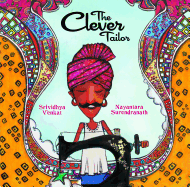
| Publisher: | Karadi Tales | |
| Genre: | People & Places, Asia, Recycling & Green Living, General (see also headings under Social Themes), Family, Clothing & Dress, Juvenile Fiction | |
| ISBN: | 9788193388907 | |
| Pub Date: | September 2019 | |
| Price: | $13.95 |
| Children's & Young Adult |
by Srividhya Venkat, illust. by Nayantara Surendranath
In Srividhya Venkat and Nayantara Surendranath's award-winning The Clever Tailor, the main character creates beautiful things from previously used fabric. This delightful story is based on an old Yiddish song. In today's global world, stories are shared in many ways; this song, already set down in several U.S. picture books, is refreshed in Venkat and Surendranath's Indian adaptation.
Poor in monetary resources, Rupa Ram takes a piece of golden fabric originally given to him as a saafa (a fancy wedding turban) and uses his skill to turns it into many different objects over time. When the turban wears out, Rupa Ram transforms the cloth into an odhni, a headscarf for his wife. After many uses, he takes pieces of the scarf to make a kurta (a long shirt) for his son and, eventually, salvages smaller scraps into a gudiya (doll) for his daughter. When the doll wears out, after much playing and hugging, Rupa Ram creates a gulaab, a decorative rose, for the whole family to enjoy. Finally, the tailor realizes that there is just enough fabric left to make something that can last forever: a kahaani, a story! Told in vivid prose with words from several Indian-subcontinent languages featured in a bold, large font colored the same as the fabric pattern (and defined in the glossary), the story works well as a read-aloud. The bright, fully saturated illustrations, in jewel-like tones with heavy black outlines, are amusingly warmhearted. An endnote explains the "philosophy behind the practice of upcycling," a strategy used for both utilitarian and creative purposes. --Melinda Greenblatt, freelance book reviewer
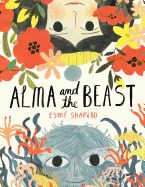
| Publisher: | Tundra Books | |
| Genre: | Friendship, Humorous Stories, Social Themes, Imagination & Play, Juvenile Fiction | |
| ISBN: | 9780735263963 | |
| Pub Date: | September 2019 | |
| Price: | $17.99 |
| Children's & Young Adult |
by Esmé Shapiro
Alma and the Beast's main character, an endearing creature covered with long, swirling gray tresses, wakes to a day "like any other." On this seemingly ordinary morning, Alma feeds her "plumpooshkie butterfly," braids the trees, combs the grass and pets the long, silky hair of the roof, "as one does when the days grow chilly and pink." But Alma soon finds that there is "something strange" in the garden. There appears to be a "hairless, button-nose beast" lurking about. Alma tries hiding but, "because beasts do not always go away when you close your eyes," the beast does not disappear. Instead, she insists that she's "TERRIBLY, TREMENDOUSLY STUPENDOUSLY LOST" and needs Alma's help to get home.
Once Alma understands that the beast is sad rather than scary, she leads her through some very hairy landscapes until the pair finally reach "a grand, whimpering, weeping willow." They go up the tree and down the other side, until they stand before the beast's "marvelous" but decidedly "bald" home. Here, Alma enjoys gardens that are watered not combed, roofs that are painted not petted, and hedges that can be trimmed rather than braided. Eventually, the day winds down, and Alma begins to "miss her hairy home."
Esmé Shapiro's (Ooko) gorgeous watercolor, gouache and pencil illustrations allow this story to soar, her boldly colorful palette and textured details bringing Alma to fantastical life. In this charming picture book, which celebrates the broadening of one's borders, Alma's day ends as it began, "like any other," but not before she hugs her new human friend, Mala, having learned that everyone--even "beasts"--have names. --Lynn Becker, blogger and host of Book Talk, a monthly online discussion of children's books for SCBWI